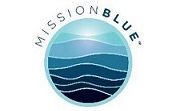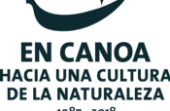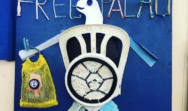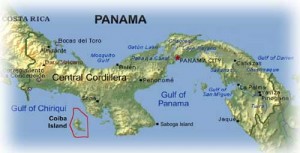Bioblitz Coíba!
Capturing Biodiversity’s Island of Treasures
Where do the wild things live? On Isla Coíba, some 23 Kilometers off the Pacific Coast of Panama. Alicia Ibañez, a scientist with the Smithsonian Tropical Research Institute (STRI) who began working in Coíba in 1997, estimates that 80 percent of the forests on Isla Coíba have remained untouched by humans for more than 500 years. Beyond its distance from the mainland, Isla Coíba has remained isolated from human development due to its local reputation for housing dangerous criminals and political dissidents. From 1919 to 2004, Isla Coíba was used as a high security penal colony, a fate that provided the unintentional preservation of the largest untouched rainforests in the Americas.
Today, the island supports an amazing amount of biodiversity with numerous endemic species as well as stable populations of species that have essentially disappeared from Panama’s mainland. Isla Coíba is a National Park of Panama and was designated as a UNESCO World Heritage Site in 2004. Unfortunately, Isla Coíba now faces numerous threats: grazing from nonnative species such as buffalo and cattle – a product of the penal colony era; terrestrial and marine poaching due to a lack of funds for supervisory staff; and pressure from private investment groups that are eager to develop a tourist industry off the park’s natural beauty. With these growing threats, there is a need to help nurture a love for this Panamanian and world ecological treasure.
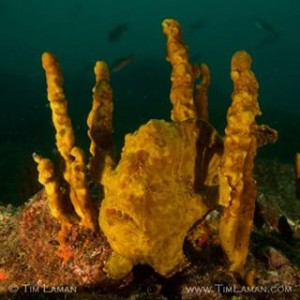
Can you see the Roughjaw Frogfish hiding in plain sight among these sponges. 84% of fish species in the Eastern Tropical Pacific are unique to that region, and this frogfish is one example. Photo expedition to Coiba Island, Panama by the International League of Conservation Photographers . Photo:Tim Laman©
Continuing their tireless work in conservation and education, the International League of Conservation Photographers (iLCP) has organized scientists and conservation organizations to launch a Coíba Bioblitz, a rapid biodiversity survey, of the area. The Baum Foundation is part of this coalition of organizations supporting the Coíba Bioblitz and participated in the first part of this Bioblitz expeditions.
Equipped with cameras, curiosity and experience, a team of more than two dozen experts – including scientists, conservation photographers and journalists – set out to capture the breadth of Isla Coíba’s biodiversity. Most of the island is rugged and unexplored, leaving much of its biological treasures undocumented and offering huge potential for the discovery of new species. Not only has this Bioblitz surfaced new and previously undocumented species on Isla Coíba and its surrounding marine environments, it also establishes a foundation for the imminent conservation campaign necessary to protect the rich biodiversity and natural beauty that is Isla Coíba.
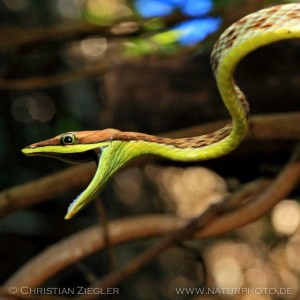
An unusually colored Brown vine snake, found near Playa Maria. Photoexpedition to Coiba Island/ Panama coordinated by the International League of Conservation Photographers: Photo: Christian Ziegler©
Accompanying the Coíba Bioblitz, iLCP plans a multi-stage strategy to foster local Panamanian and international appreciation for the protection of Isla Coíba and similar ecological Hope Spots. Seasoned conservation photographers and iLCP Founding Fellows Christian Ziegler and Tim Laman hope that their photo-documentation will reach a wide audience and result in the lasting ecological protection for Isla Coíba. Images from the expedition were exhibited at the opening of Panama’s BioMuseo in the fall of 2015, featured in GEO Magazine, Europe’s most important natural history publication, made available to partnering organizations for their work to support the conservation of Isla Coíba and compiled into a coffee table book as a lasting reminder of the biological gems of Isla Coíba.
vvlx,
hentai,
xporn,
xnxx,
sex việt,
Family Practice Doctors Near Me,
Ratify Treaties,
Best Hookup Apps,
Brunch On A Wednesday,
Comfortzone,
Plaza Premium Lounge Orlando Reviews,
Catering 77002,
Cauliflower And Coconut Curry,
Usa Rail Pass,
Active Duty Service Member,
Patch American Flag,
Farfetch Coupon Code,
Connect Google Mini,
Nike Mens High Top,
Bronny James Usc Basketball,
Anal Sex Prep,
Aesports,
Check Balance On Debit Card,
Add People Trustpilot,
Skype Ids,
